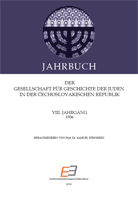
We kindly inform you that, as long as the subject affiliation of our 300.000+ articles is in progress, you might get unsufficient or no results on your third level or second level search. In this case, please broaden your search criteria.







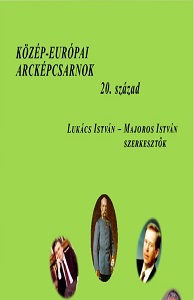
Arthur Schnitzler was one of the most prominent representants of the so-called „Jung Wien”, i.e. the group of Vienna intellectuals, writers and artists around 1900. His dramatical and narrative works demonstrate characteristic traits, social, intellectual and aesthetical problems, and figu-res of the late k.u.k.-Monarchy, and although he was often considered as an author contributing to the „Habsburg myth”, he had a very sceptical and critical view about his time and the Vienna society of the turn of the century. Schnitzler’s works account i.a. for the ’language crisis’, the crisis of personality in a very special manner, and in his novellas he introduces experimental narrative tools (e.g. multiperspectivism, interior monologue, unreliability) which makes him to a prominently modern author.
More...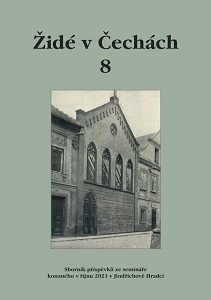
This biographical study presents amicro-portrait of Joachim Deutschmann. He served in various rabbinic positions in Bohemia and Moravia at a time of dramatic social change in the Habsburg Monarchy at the turn of the 18th and 19th centuries. He not only gained a reputation within traditional rabbinic circles, but also enjoyed extraordinary respect among the younger generation of representatives of the Jewish Reform movement in Bohemia, Moravia, and Hungary. Although he left no comprehensive work, his homiletic sermons in Hebrew were preserved in manuscript copies by students who attended his private yeshivot in Hořice (Horschitz), Jevíčko (Gewitsch), Třebíč (Trebitsch), and Kolín, where he served as rabbi.
More...
Bernard Schütz was born in 1878, the son of Jakob Schütz, a butcher in Lukavec (Lukawetz) near Pacov (Patzau), a small town with a strong Jewish community. In 1901, after learning the gingerbread-making trade and apprenticing as a journeyman, he became a self-employed baker in Jindřichův Hradec (Neuhaus). In 1903, after marrying Emilia Löwy from Vysoká Pec near Příbram, he moved to Pardubice (Pardubitz), where he opened a bakery specializing in matzah products and later founded the Mellekta gingerbread company, which became noted for its honey-marzipan gingerbread and chocolate toppings. On 7 May 1942, Bernard Schütz and his wife were deported to the Terezín/Theresienstadt ghetto, where he ran the bakery until May 1945. Unlike most of their family, they both survived the Holocaust. After the war, Bernard Schütz became chairman of the restored Jewish religious community in Pardubice. He died in Mariánské Lázně (Marienbad) on 18 August 1958.
More...
Richard Glazar (29 November 1920, Prague – 20 December 1997, Prague) is known to the general public as one of the few people who managed to escape from the Treblinka death camp. As one of the last witnesses to the mass murders at Treblinka, he exerted a great deal of effort and energy to provide testimony about what happened there. He also wrote his story down and had it published as a book. Richard Glazar’s family roots are linked to the central Bohemian town of Kolín; his father was a member of the Goldschmid family, whose presence in Kolín was documented from the second half of the 18th century. He retained memories of his grandparents from Kolín, as well as his childhood experiences and his two years at high school there. How these roots in Kolín influenced the personality of Richard Glazar is a question that this paper seeks to answer.
More...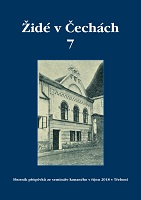
The organization of Jewish religious communities in the Czech lands between the two world wars faced numerous challenges, as detailed in the extensive archival materials preserved in the Jewish Museum in Prague. The 1890 law established Jewish religious communities as public territorial corporations, mandating the collection of a religious tax to cover community needs. Despite the autonomy granted by the law, the communities struggled with issues such as appointing and maintaining rabbis, and the lack of broader organizations to coordinate inter-community relations. Efforts to create a unified organization culminated in the formation of regional unions and the Supreme Council of Jewish Religious Communities in 1927. These unions aimed to manage common affairs, represent Jewish interests to state authorities, and ensure the preservation of Jewish heritage. The Supreme Council also focused on social care, education, and the protection of historical and artistic Jewish artifacts. The study highlights the resilience and adaptability of Jewish communities in navigating legal and financial uncertainties, emphasizing the importance of preserving their history for future generations.
More...
The history of the Jewish community in Vodňany is often overlooked, despite its roots tracing back to the late 15th and early 16th centuries. This study sheds light on the community's significant yet underappreciated contributions to the town's development. It highlights the involvement of Jewish residents in local governance, various associations, and the establishment of early industrial enterprises. The narrative also touches on the challenges faced by the community, including anti-Semitic sentiments and the impact of World War II. The preservation of archival materials, such as those organized by historian Jan Heřman, is crucial for understanding the community's role in Vodòany's history. The study emphasizes the importance of recognizing and documenting the Jewish community's influence on the town's socio-economic and cultural landscape. By exploring these historical threads, the research aims to correct past oversights and provide a more comprehensive view of Vodňany's heritage.
More...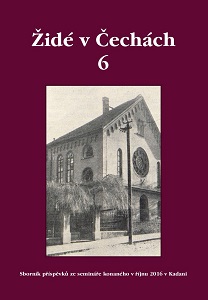
In the late 19th century, the Jewish community in Kadaň faced significant challenges in establishing their religious presence. Despite initial resistance, the community gradually formed, leading to the creation of a prayer association in 1874 and a religious association in 1884. By 1893, a formal Jewish religious community was established, serving the judicial districts of Kadaň, Přísečnice, and part of Doupov. The community initially used private homes for worship until a dedicated synagogue was built in 1887. This synagogue, designed by Hubert Tippmann, became a central place of worship and community activities. The building process faced bureaucratic hurdles, but the synagogue was finally completed and consecrated in 1900. The synagogue served the community until it was destroyed during the Kristallnacht pogrom in 1938. The aftermath saw the Jewish community's properties being seized and repurposed, with the synagogue's remains being demolished and its materials reused in various local constructions. The study highlights the resilience of the Jewish community in Kadaň and the historical significance of their synagogue.
More...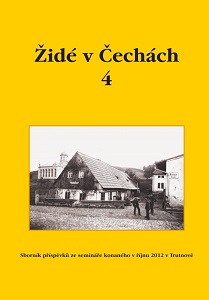
The document explores the history of the Jewish religious community in Trutnov, focusing on the construction and fate of the Trutnov synagogue. It highlights the contributions of notable architects like Konrad Kühn and Johann Blažek, who designed the synagogue and other significant buildings in the region. The text details the establishment of the synagogue in 1885, its architectural features, and the community's efforts to maintain it. It also covers the tragic events of Kristallnacht in 1938, which led to the synagogue's destruction. The document includes information on the Jewish population's economic activities and the impact of Nazi occupation during World War II. It concludes with reflections on the preservation of Jewish heritage and the challenges faced in documenting the community's history due to the loss of many original records.
More...
The document details the history of the Jewish settlement in Bezdružice, starting from 1694. It highlights the establishment of the Jewish community and cemetery in the mid-18th century, noting the preservation of several original Jewish houses despite modern renovations. The synagogue, built in 1812 in a classicist style, was destroyed by the Nazis in 1938 but remains a cultural monument. The cemetery, once neglected, underwent extensive restoration between 2011 and 2012, revealing 185 gravestones, including the oldest from 1762. The document also discusses the discovery of Jewish gravestones used as construction material in the 20th century and their subsequent return to the cemetery. It emphasizes the unique architectural and epigraphic features of the gravestones, such as plant motifs and the use of matronymics. The restoration efforts were supported by German volunteers and local organizations, highlighting the collaborative nature of the project.
More...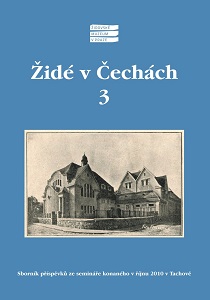
The Jewish population in Český Krumlov faced significant challenges and changes from the 14th century to the 20th century. Initially, Jews were allowed to settle in the area by royal decree, but they faced expulsion and restrictions in the late 15th century. It wasn't until the mid-19th century that Jewish families began to resettle in the town, contributing to its social and economic life. Prominent families like the Spiros played a crucial role in the local industry, particularly in papermaking. The Jewish community established a synagogue and a cemetery, and their children attended local schools. Despite their integration, the community faced growing antisemitism in the early 20th century, culminating in the Nazi occupation. During this period, Jewish properties were confiscated, and many community members were deported or fled. The synagogue was destroyed, and the Jewish population in Český Krumlov never fully recovered after World War II. The history of the Jewish community in Český Krumlov is a testament to their resilience and contributions despite facing severe persecution.
More...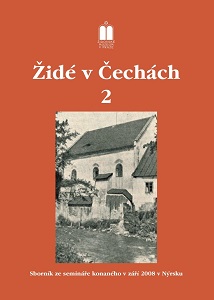
The research on Jews in the town of Bezdružice (Weseritz) highlights the historical presence and contributions of the Jewish community in the Czech-Bavarian border region. The study began with the discovery of Jewish cemeteries and memorials in the Tachov area, leading to a deeper exploration of Jewish life in Bezdružice. The Löwenstein-Wertheim family acquired the Bezdružice estate in the early 18th century, and Jewish families, such as the Sinay family, played significant roles in the local economy. The Jewish community faced numerous challenges, including property confiscation and persecution during the Nazi occupation. Despite these hardships, the community's legacy is preserved through historical records and ongoing research efforts. The synagogue and cemetery in Bezdružice, although damaged, remain important cultural and historical sites.
More...
The Jewish communities in the Teplice and Duchcov districts were significant in the early 20th century, with Teplice having the largest community. Despite facing challenges, including the Great Depression and World War II, these communities maintained their cultural and religious practices. The Teplice synagogue and Jewish ghetto were destroyed, but the community's legacy persists through historical records. The Jewish community in Duchcov, although smaller, also played a vital role in the region's history. The Sobědruhy community, formed by families expelled from Teplice, had a strong presence and contributed to the local economy. The Jewish cemetery in Sobědruhy, established in the late 17th century, remains a significant historical site.
More...
Interest in the study of Jewish history and culture in northwestern Bohemia has grown since the late 1980s, leading to numerous publications and online resources. The region's Jewish cemeteries, often neglected and damaged by Nazi and communist regimes, have become a focal point of research. The Jewish communities in areas like Teplice, Ústí nad Labem, and Litomìøice have left behind significant historical records, including cemetery inscriptions and community documents. Efforts to preserve these sites have increased, with many cemeteries undergoing restoration funded by the European Union and local authorities. The Teplice Jewish community, once the second largest in Bohemia, has a rich history documented through various sources. The Ústí nad Labem cemetery, established in 1866, faced significant damage during and after World War II. In Litomìøice, the Jewish cemetery dates back to the 16th century, with many historical tombstones still present. The preservation and study of these cemeteries provide valuable insights into the Jewish heritage of the region. Local organizations and volunteers play a crucial role in these restoration efforts. The ongoing research and preservation work aim to honor and remember the Jewish communities that once thrived in northwestern Bohemia.
More...